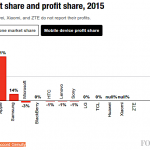Artificial intelligence may seem like a scary phrase. Ever since the movie 2001: A Space Odyssey, it is easy for us to conjure up images of a super computer that is as intelligent as any human being out there, a computer that can actually mimic its owner’s actions and thoughts. Although the movie’s computer, known as Hal, is fictional, many of the devices we use today seem to have much in common with that piece of machinery. Smartphones and even computers allow us to do things that would’ve been unthinkable even a few decades ago. In fact, the famed scientist Stephen Hawking declared that if we develop artificial intelligence (or AI) too much, the human race could cease to exist.
How Long Has AI Been Around?
Although the actual term “artificial intelligence” has not been around very long, the research into it began about 70 years ago, when people first started studying the combination of technology and the human brain. However, it has only been recently that we have seen the practical implications of AI, mostly in our electronic devices. Today, we have computers, personal planners, and even cell phones that seem to be as smart, or smarter, than we are. They keep track of our schedules, remind us of appointments, allow us to play games or figure out mathematical problems, listen to music and much, much more. Every day these devices become smarter and allow us to accomplish more things and, therefore, enjoy life more. Although many people believe that modern technology is moving too fast and causes complications, most people agree that today is easier and more fun because of the technology involved.
AI in Practical Situations
When studying artificial intelligence, experts study areas such as reasoning, planning, communication, perception, knowledge, and learning, as well as the capacity to manipulate and move objects. General AI, which is the belief that a computer can be trained to do everything that a human being can do, is thought by most experts to be at least thirty years away. Today, however, modern technology means that many computers and electronic devices can do a lot of the things human beings can now do.
To put these concepts in more practical terms, consider the following:
- Online phone systems can now recognize certain speech patterns.
- ASIMO, a robot developed by Honda, can walk, run, climb stairs, and kick a ball.
- A computer known as Vocaloid can sing songs realistically, with the right vocal effects and pronunciation stresses.
- TOPIO is a robot that can play table tennis with human beings.
- A variety of artificial limbs and body parts have been developed that work just like the real things, including cochlear implants as well as electrode implants that have successfully restored some sight in formerly blind patients.
Although the AI that is portrayed in today’s television shows and movies is still far off, it is becoming closer to becoming a reality with each passing day. With the way modern technology is progressing, it could be sooner than we think.
If you like things more visual and simplified, you may want to see this guide to artificial intelligence provided by Advancis, a UK based company that provides bad credit loans.










